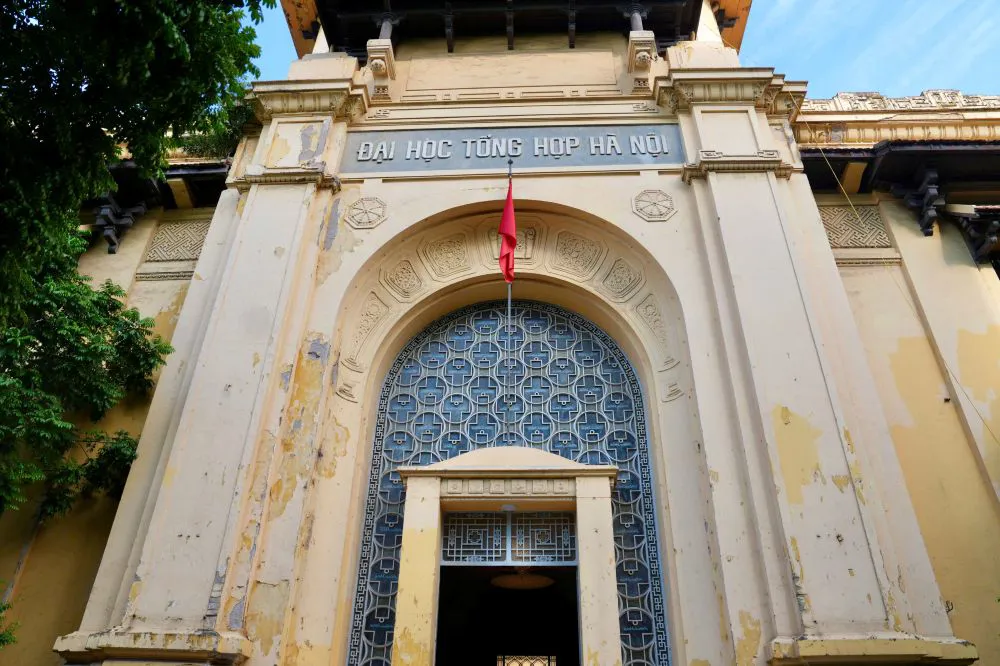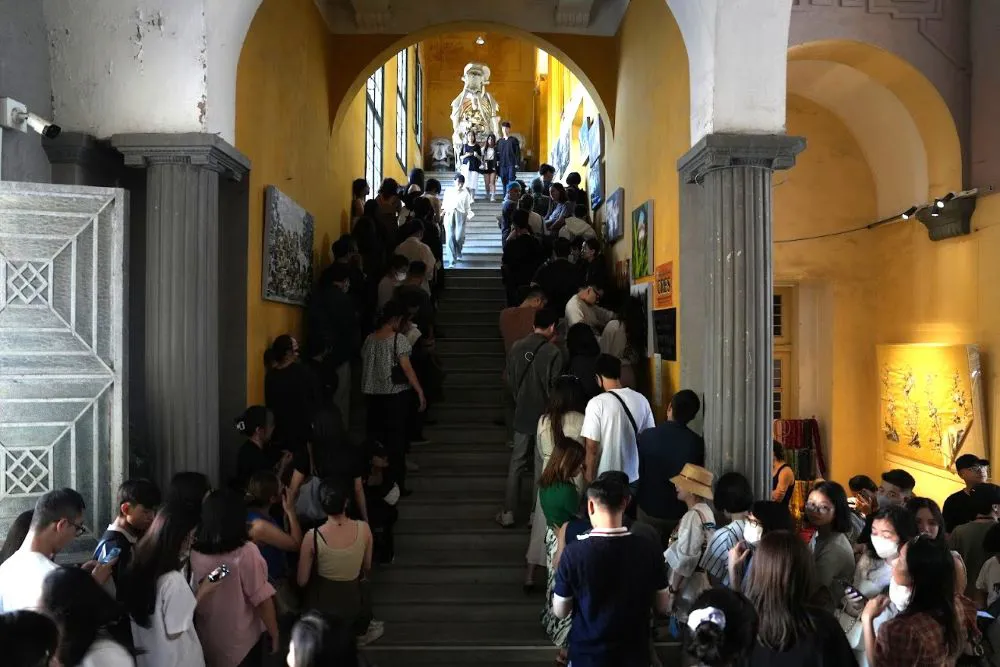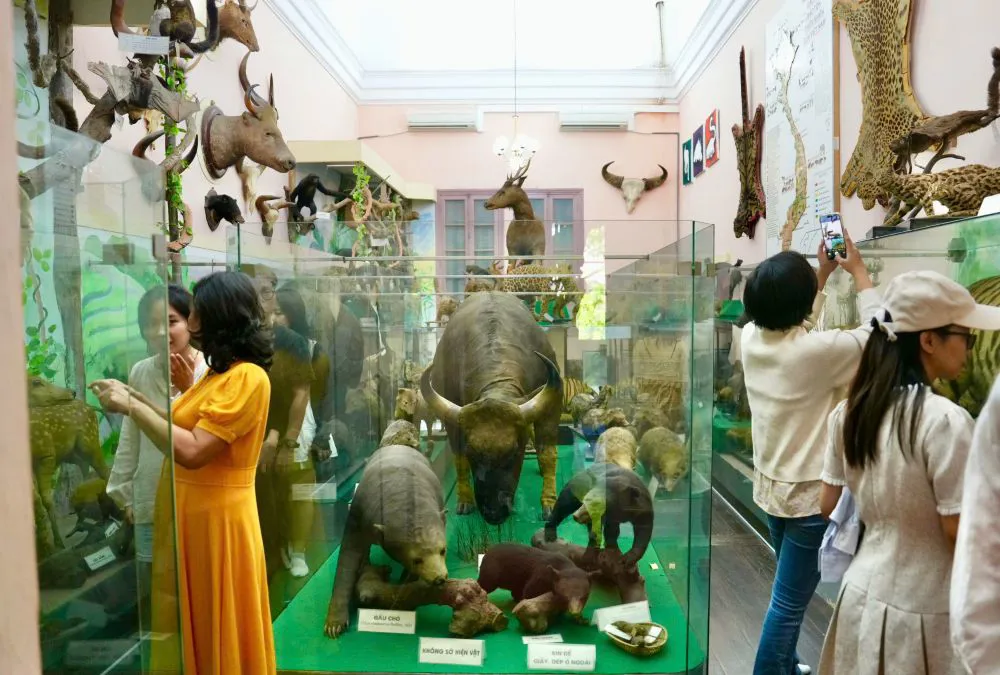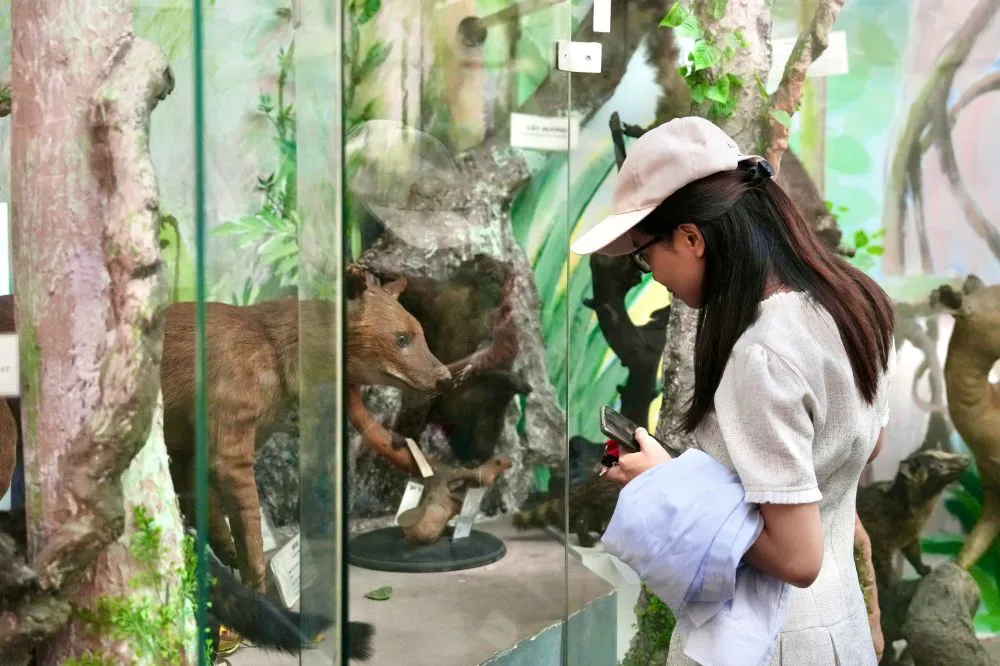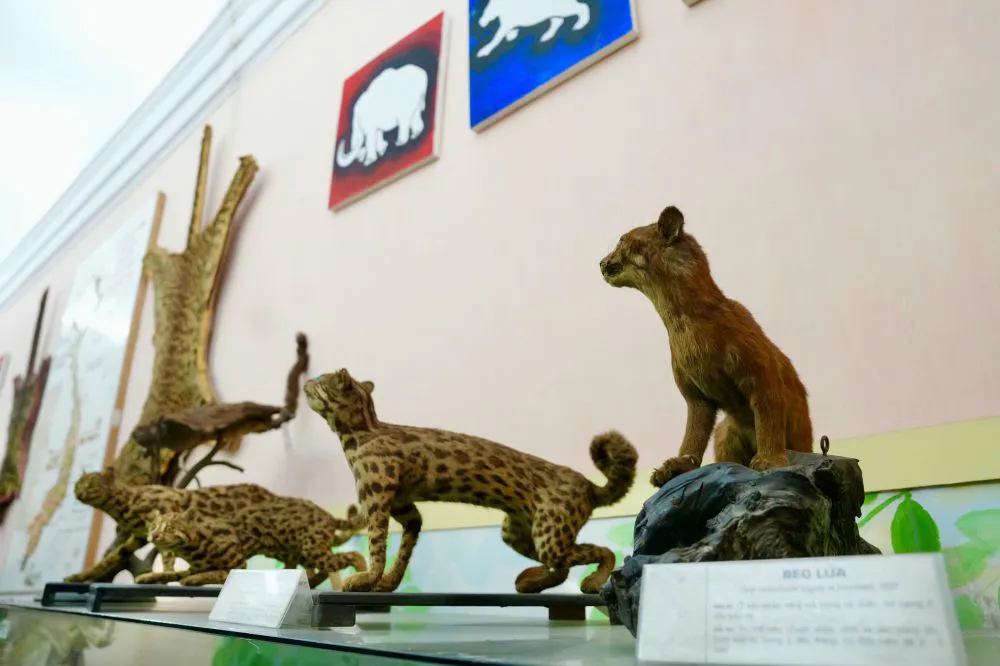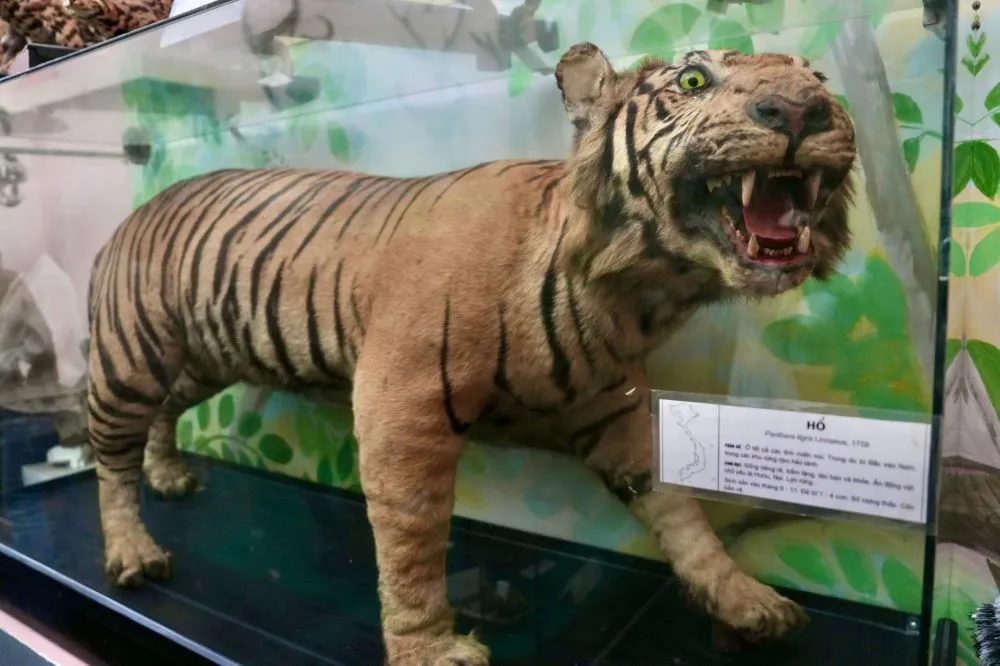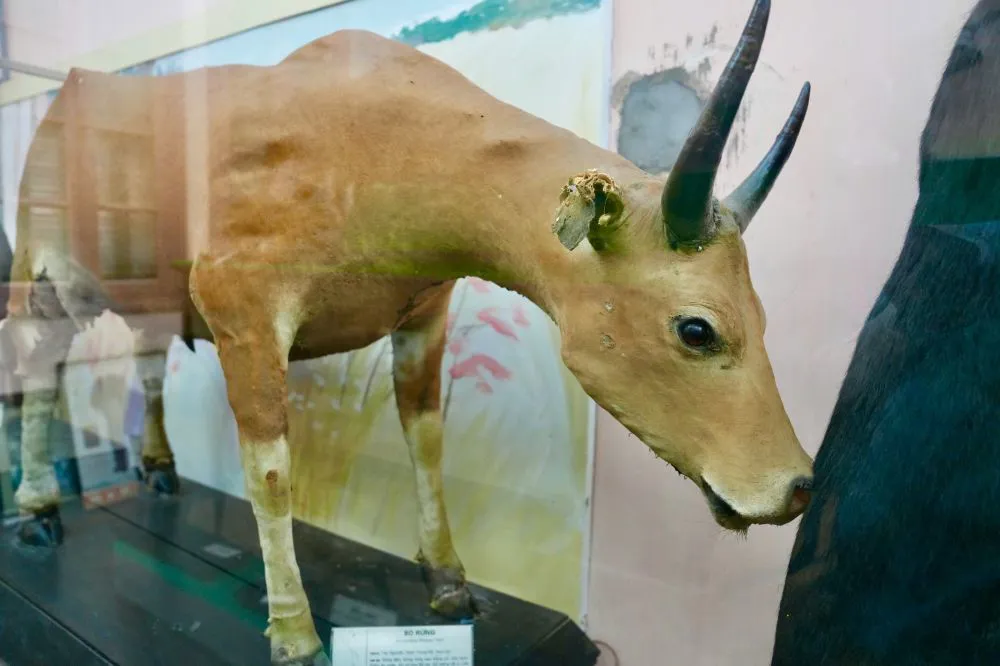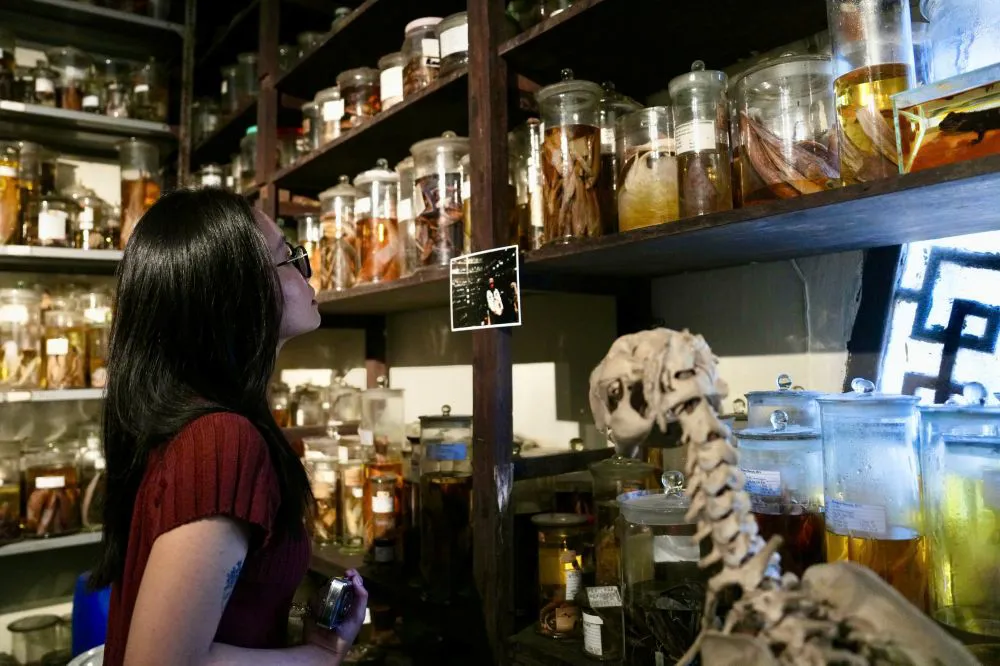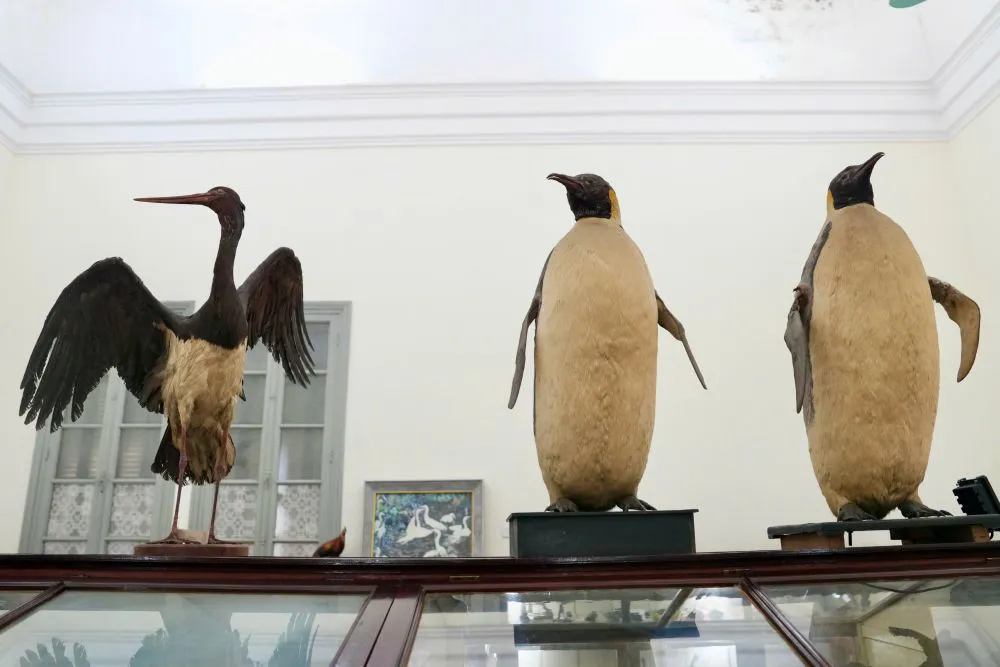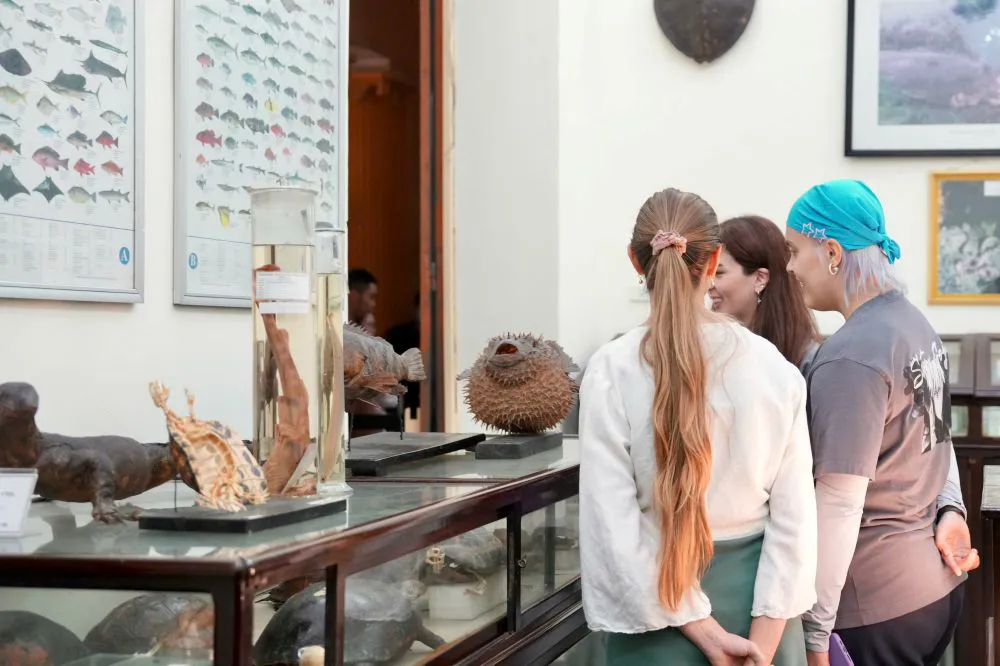The Museum of Biology of Hanoi University of Science, located on the second floor of the Indochina University (now University of Natural Sciences) at No.19 Le Thanh Tong Street, Hoan Kiem District, Hanoi, was established in 1926.
The first museum of its kind in Indochina, it was originally conceived for research and educational purposes. For the first time, the museum has opened its doors to the public during the Hanoi Festival of Creative Design 2024, offering a rare opportunity to explore its fascinating collections.
|
| The museum is housed in one of Hanoi’s most iconic examples of French colonial architecture. |
|
| Nearly a century old, the institution remains remarkably intact, preserving hundreds of thousands of animal and plant specimens from Vietnam, collected from the late 19th century to the present. |
|
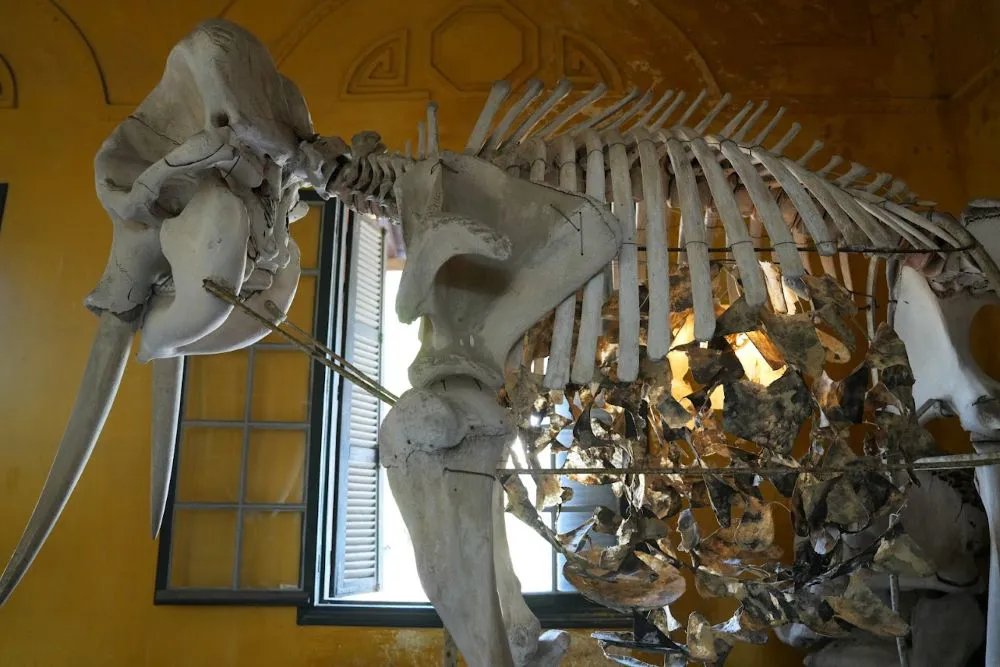 Visitors are greeted at the entrance by the well-preserved skeleton of a large mammoth. | | The Museum of Biology houses 2,500 mammal specimens belonging to 136 species and subspecies, representing 70 genera, 26 families and 10 orders. |
|
|
| The exhibition represents 45% of the mammal species currently found in Vietnam, with 136 out of 300 species on display in the museum. |
|
| The collection includes specimens of felines such as the Indochinese tiger, jungle cat, leopard and many others. |
|
| It provides a vast collection of specimens and supports research in a range of life sciences, particularly in areas such as systematics and taxonomy, biodiversity and resource studies. |
|
| The Biology Museum was once a "natural laboratory". It was used exclusively for teaching and training purposes. |
|
| Over the nine days of the festival, the museum has become an exciting and popular destination for many in the capital, especially young people. |
|
| The exhibit space houses a collection of bird specimens, including the Emperor Penguin, one of the most iconic penguin species. |
|
| The museum also draws international visitors, offering them the opportunity to explore and learn about Indochinese biodiversity. |

